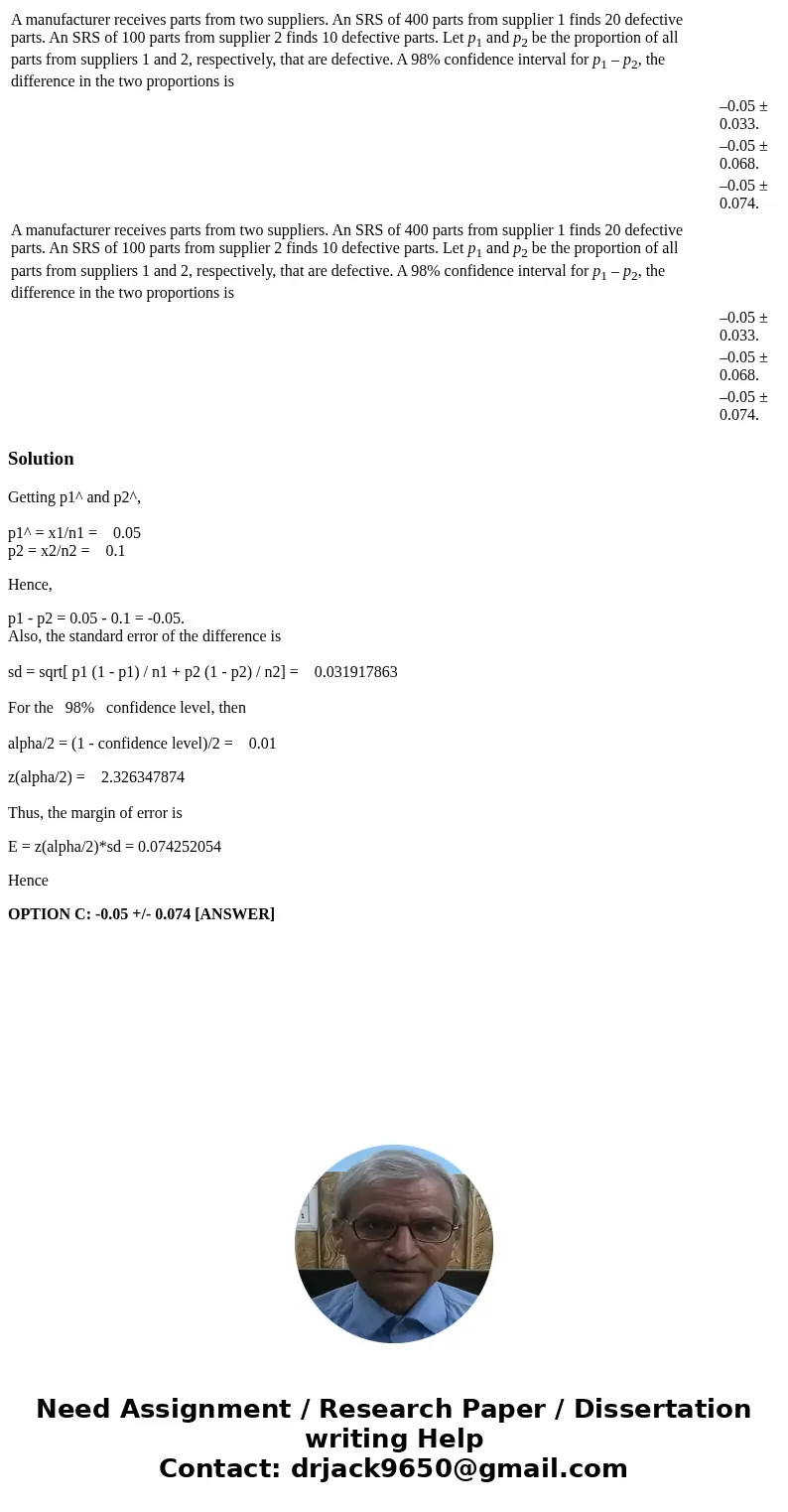A manufacturer receives parts from two suppliers An SRS of 4
| A manufacturer receives parts from two suppliers. An SRS of 400 parts from supplier 1 finds 20 defective parts. An SRS of 100 parts from supplier 2 finds 10 defective parts. Let p1 and p2 be the proportion of all parts from suppliers 1 and 2, respectively, that are defective. A 98% confidence interval for p1 – p2, the difference in the two proportions is | |||||||
|
| A manufacturer receives parts from two suppliers. An SRS of 400 parts from supplier 1 finds 20 defective parts. An SRS of 100 parts from supplier 2 finds 10 defective parts. Let p1 and p2 be the proportion of all parts from suppliers 1 and 2, respectively, that are defective. A 98% confidence interval for p1 – p2, the difference in the two proportions is | |||||||
|
Solution
Getting p1^ and p2^,
p1^ = x1/n1 = 0.05
p2 = x2/n2 = 0.1
Hence,
p1 - p2 = 0.05 - 0.1 = -0.05.
Also, the standard error of the difference is
sd = sqrt[ p1 (1 - p1) / n1 + p2 (1 - p2) / n2] = 0.031917863
For the 98% confidence level, then
alpha/2 = (1 - confidence level)/2 = 0.01
z(alpha/2) = 2.326347874
Thus, the margin of error is
E = z(alpha/2)*sd = 0.074252054
Hence
OPTION C: -0.05 +/- 0.074 [ANSWER]

 Homework Sourse
Homework Sourse